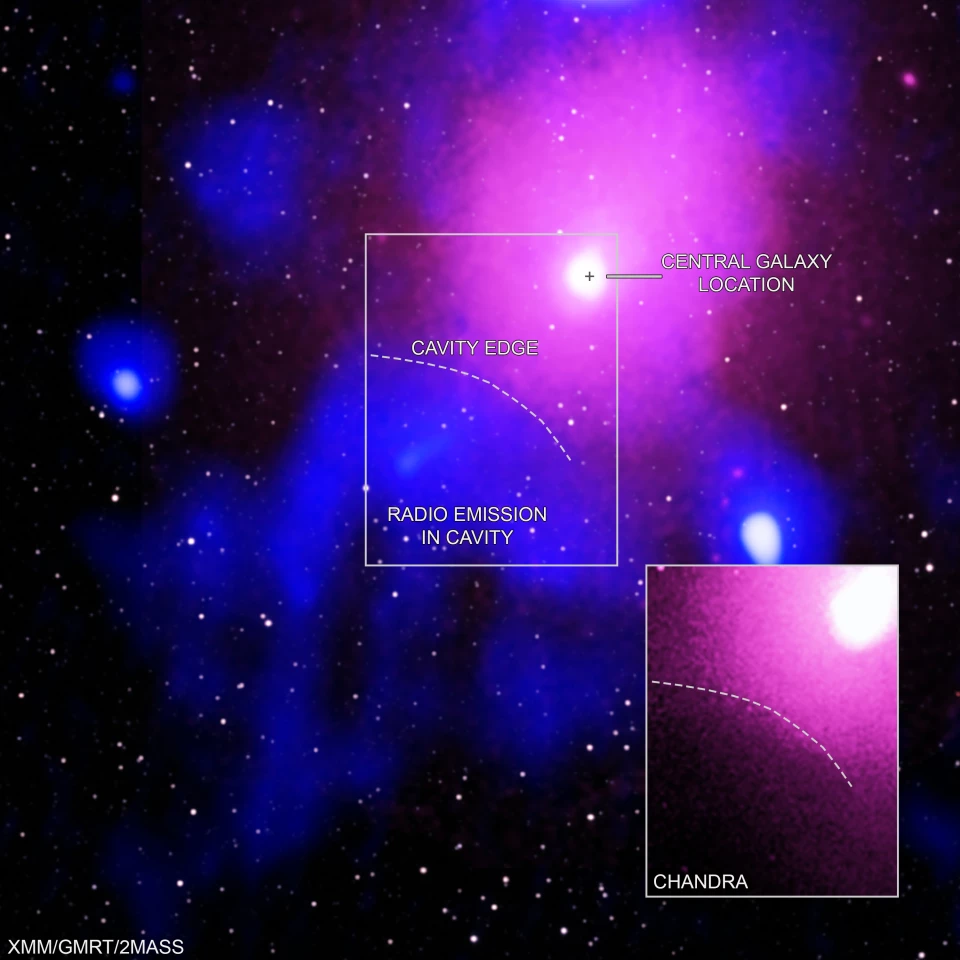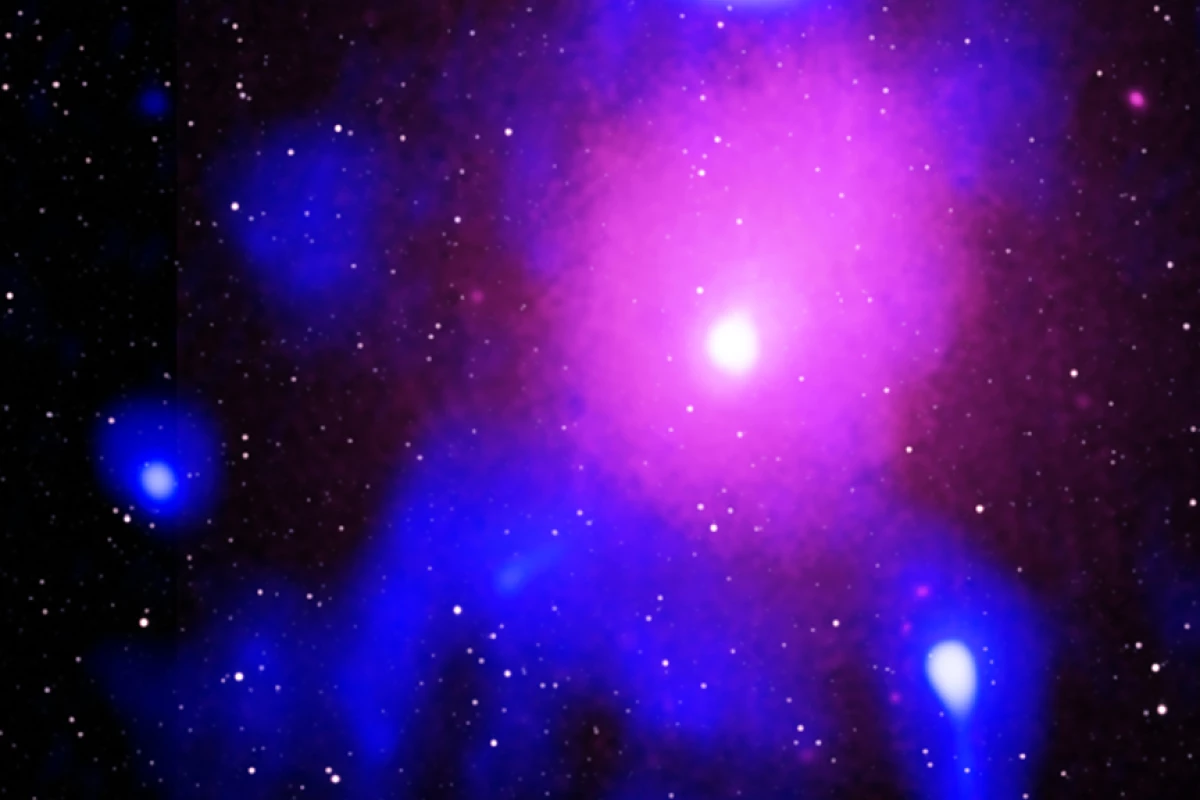Astronomers have found evidence of the most powerful explosion in the universe. Using data from ESA's XMM-Newton and NASA’s Chandra X-ray space telescopes, the Murchison Widefield Array (MWA) in Australia, and the Giant Metrewave Radio Telescope (GMRT) in India, the team found that a "crater" of intergalactic-scale detonation was caused by a supermassive black hole located in the Ophiuchus galaxy cluster, made of thousands of galaxies 390 million light-years from Earth.
There is big, really big, and so big that it's hard to wrap one's mind around the scale. In this case, the Ophiuchus cluster black hole explosion is so large that it seems almost unbelievable.
"In some ways, this blast is similar to how the eruption of Mount St. Helens in 1980 ripped off the top of the mountain," says Simona Giacintucci of the Naval Research Laboratory in Washington, DC. "A key difference is that you could fit fifteen Milky Way galaxies in a row into the crater this eruption punched into the cluster's hot gas."
Fifteen Milky Ways across would be equal to 1,575,000 light-years, or one and a half times the distance between Earth and the Andromeda galaxy. Sitting at the center of this intergalactic crater and at the core of the galactic cluster is a supermassive black hole, which provided the energy for this incredible explosion consisting of powerful jets of gas and beams of X-rays and radio waves.
In fact, it was the very size of this explosion that was the reason why it wasn't believed when first seen. According to ESA, the first clue to the explosion was seen in 2016 when a team of astronomers led by Norbert Werner looked at X-ray emissions data from the area of the blast collected by the Chandra observatory, where they saw the curved edge of the resulting X-ray image, but rejected the idea of an explosion forming such a curve because of the vast amounts of energy involved.

Then, a later study led by Giacintucci found the same curved edge in data from the XMM-Newton observatory and combined this with radio observations from MWA and GMRT, confirming the Chandra findings and showing that the edge is the limit of an area of radio-emitting gas.
What was even more remarkable was that when they ran the numbers, they found that the force of the explosion was five times greater than the previous most powerful black hole explosion in the galaxy cluster MS0735.6+7421.
"The radio data fit inside the X-rays like a hand in a glove," says Maxim Markevitch of NASA's Goddard Space Flight Center. "This is the clincher that tells us an eruption of unprecedented size occurred here."
Currently, the Ophiuchus black hole explosion is a "radio fossil." The explosion was caused by the black hole sucking in gas and dust from its host galaxy, most of which didn't fall in. Instead, the matter went into a slingshot trajectory and shot away at nearly the speed of light in massive jets or beams. Eventually, this caused the gas around the cluster to slosh like wine in a wineglass, depriving the supermassive black hole of fuel to grow and produce new jets.
"As is often the case in astrophysics we really need multi-wavelength observations to truly understand the physical processes at work," says team member Melanie Johnston-Hollitt of the International Centre for Radio Astronomy in Australia. "Having the combined information from X-ray and radio telescopes has revealed this extraordinary source, but more data will be needed to answer the many remaining questions this object poses."
The research was published in The Astrophysical Journal.






